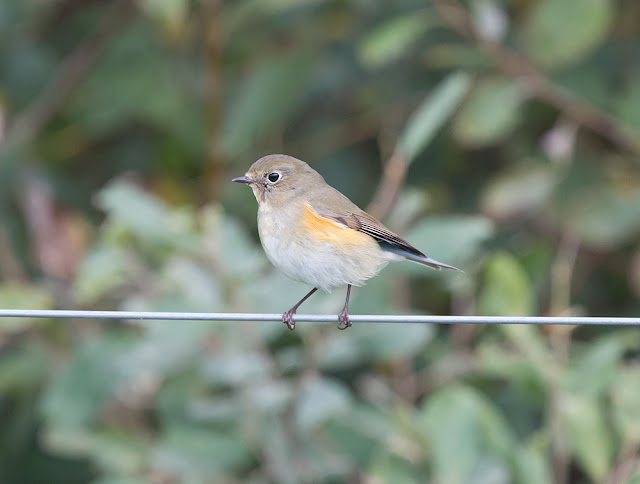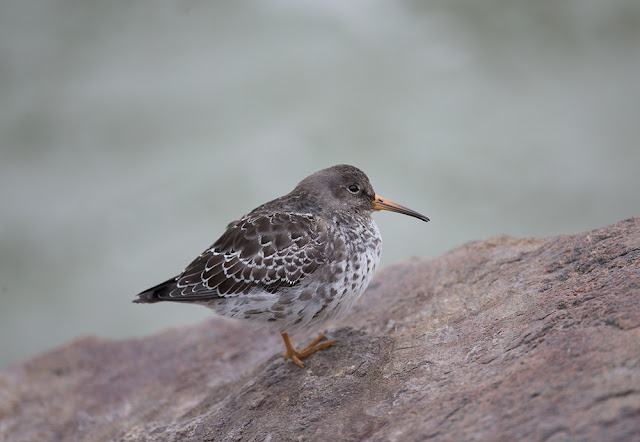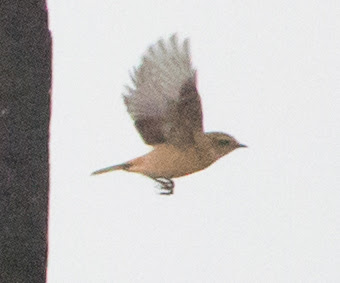After three early starts and lots of walking, I decided Saturday would be a rest day and I would be raring to go Sunday before heading back to work.
However, things didn't quite go to plan. I was busy doing chores on Saturday morning when a message on the Norwich Birders WhatsApp group said "Rufous Bush Chat at Stiffkey". Now that's a bird and a half! One of my favourite species. However, and there will be a lot of birders who won't understand this, but my first reaction was 'I'm not going to bother going for that'! I'm not much of a twitcher and my immediate thought was 'that'll be one hell of a shitshow'. I could see it already, large crowds of birders (in a pandemic), parking problems, pissed off locals, birders accusing 'toggers', 'toggers' accusing birders, a lost, hungry bird being pushed around by the crowd. Not how I want to do my birding and not how I want to see a bird.
I tried to press on with my chores and 'stuff' but I was distracted now and I was relieved when I got a message from James Appleton to say he had found a Pallas's Warbler in the churchyard at Happisburgh. I gathered my gear up and headed out.
Suffice to say I didn't see the Pallas's. I walked from the cricket club to coast watch and en route I bumped into James who had just found a tail-pumping Pipit. He was pretty sure it was just a Tree Pipit and his 'back of the camera' shots did look like Tree Pipit (albeit the head / face pattern wasn't visible in the shots), raspberry legs and fine flank streaks. We searched for the bird and I flushed a pipit which called briefly (sounding very like Tree Pipit), alighted on a telegraph wire and then dropped down and out of sight before I could see it either through bins or take a photo. We couldn't relocate it but seemed to have resolved ourselves into taking it as Tree Pipit, although I did think it was late for that species.
That evening James processed the shots and sent me photos of what was certainly an Olive-backed Pipit. D'oh!!
I looked the next morning as did James but it was gone. Double d'oh.
But I was out in the field now, there wasn't much else happening so I bit the bullet and drove to Stiffkey. And you know what...............it wasn't all that bad. I got parked without too much trouble (although all those sensors and cameras on my car did assist). I donned my wellies and face -mask and marched out across the salt marsh to where the crowd was assembled.
 |
| Birders on Stiffkey saltmarsh |
I found a reasonable gap that allowed me to maintain social distance and waited for the bird to show. A minute later (yes, just one minute), the bird popped up on the sueda on the opposite side of the channel from where I stood and posed for a minute before flitting off. I cursed myself for not bringing my big lens whilst I fired off a few frames. Job done! I watched the bird for a short while longer before beating a retreat back to my car for lunch.
 |
| Eastern Rufous Bush Robin - Stiffkey, Norfolk - 18th October 2020 |
The bird is supposedly one of the eastern races familiaris or syriaca (I suppose I may have seen syriaca in Kuwait?) which is duller than the nominate race galactotes (which I saw in Morocco - see images below).
 |
| Rufous Bush Robin (galactotes), Morocco - May 2013 |
Truth be told it was a bit scruffy looking (certainly compared to the above specimen) but despite that it has survived as far as Wednesday 21st October, lets hope it continues to do so. An extradinary find and all said, I'm glad I saw it. Birders were well-behaved and the whole thing wasn't anything like the fiasco I expected it to be.































